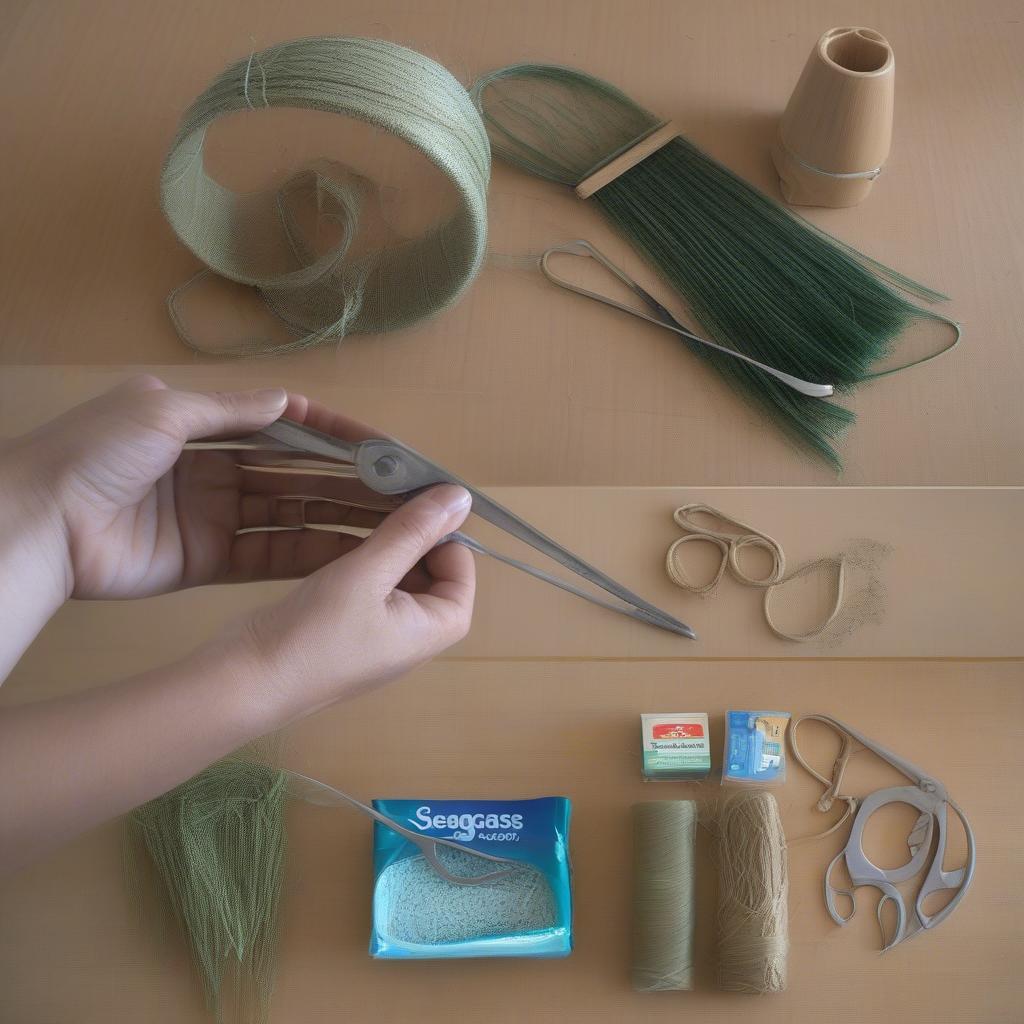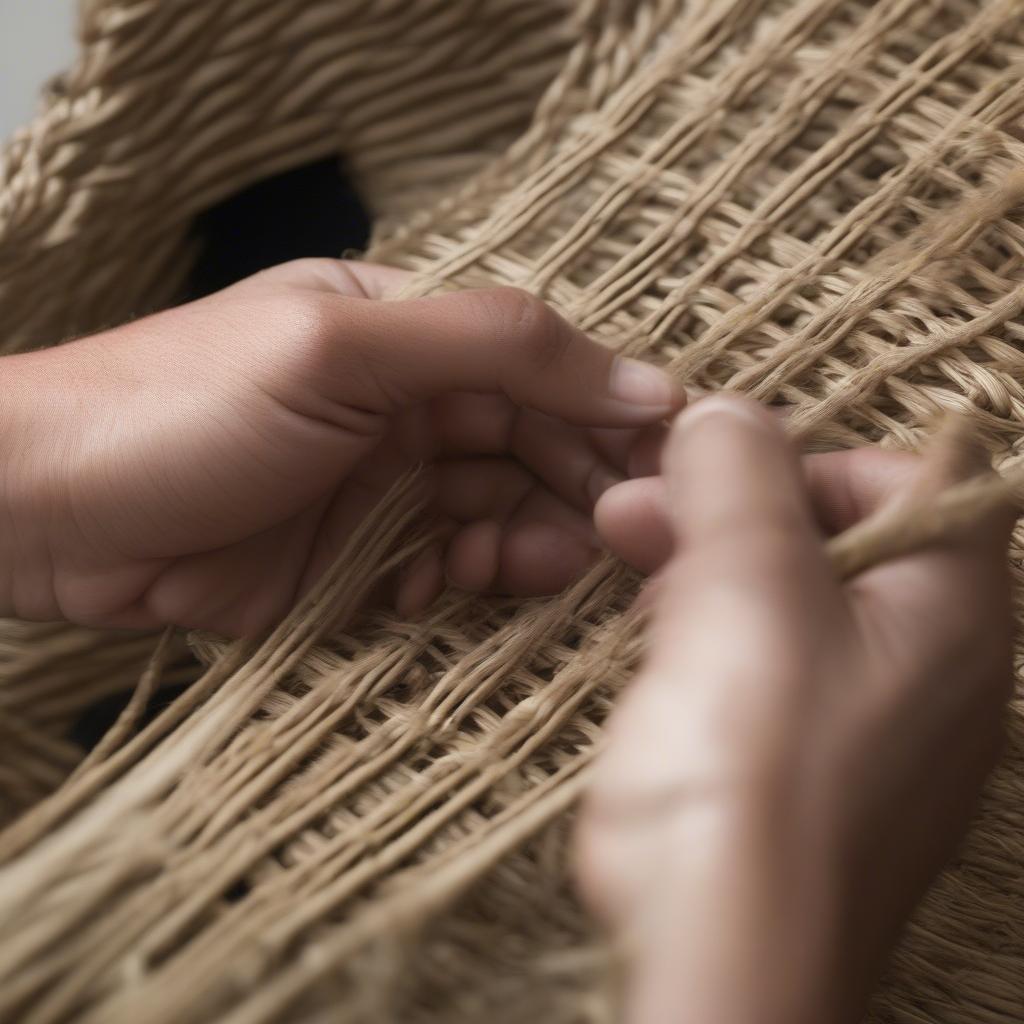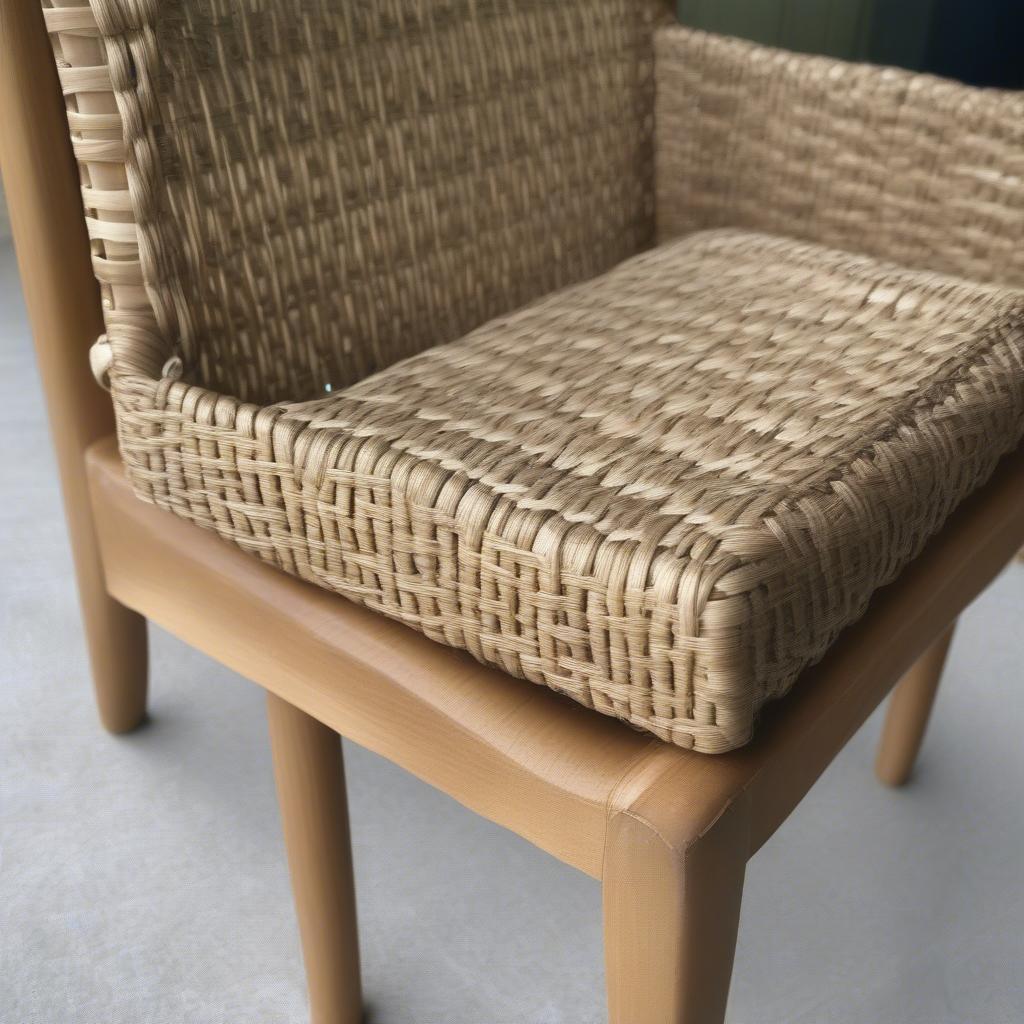Weave Chair
How Do You Weave Seagrass Chair Seats?
Learning How Do You Weave Seagrass Chair Seats can transform a worn-out chair into a beautiful and functional piece of furniture. Seagrass, a durable and sustainable material, brings a natural, coastal vibe to any space. Whether you’re a seasoned crafter or a beginner, this guide will provide you with the knowledge and techniques to weave a seagrass chair seat yourself. Let’s dive into the world of seagrass weaving!
Understanding Seagrass as a Weaving Material
Seagrass is a popular choice for chair seats because of its strength, flexibility, and resistance to moisture. It’s also surprisingly comfortable and adds a touch of rustic charm. Before you begin weaving, it’s essential to understand the properties of seagrass and choose the right type for your project. Look for seagrass that is tightly woven, evenly colored, and free from any signs of damage. The width of the seagrass will also depend on the size and style of your chair.
 Preparing Seagrass for Chair Seat Weaving
Preparing Seagrass for Chair Seat Weaving
Preparing Your Chair and Gathering Your Supplies
Before you start weaving, ensure your chair frame is sturdy and free of any loose parts. If you are replacing an existing seat, remove the old material completely. Gather your supplies, which include seagrass, scissors, a measuring tape, a blunt needle or bodkin, and pliers. Having everything at hand will make the weaving process smoother. You might also consider having a small bucket of water nearby to keep the seagrass damp and pliable. This helps prevent it from breaking during the weaving process.
Step-by-Step Guide to Weaving a Seagrass Chair Seat
Weaving a seagrass chair seat involves a series of steps that require patience and precision. Follow these instructions carefully to achieve a professional-looking result.
- Measure and Cut: Measure the chair seat opening accurately to determine the length of seagrass you will need. Cut the seagrass strands slightly longer than your measurements to allow for weaving and finishing.
- Create the Base: Begin by weaving a simple over-under pattern across the chair seat frame, creating a foundation for the rest of the weaving. This initial layer provides stability and ensures a tight, even weave.
- Build the Layers: Continue weaving, adding new strands of seagrass and working your way from the front to the back of the chair seat. Use the blunt needle or bodkin to help guide the seagrass through the existing weave.
- Tighten and Secure: As you weave, ensure the seagrass is tight and evenly spaced. Use pliers to help pull the strands tight and secure them in place.
- Finishing Touches: Once you’ve woven the entire seat, tuck in any loose ends and trim any excess seagrass. You can use a strong adhesive to secure the ends, ensuring a neat and durable finish.
 Weaving Seagrass onto a Chair Seat Frame
Weaving Seagrass onto a Chair Seat Frame
Troubleshooting Common Seagrass Weaving Issues
Even experienced weavers can encounter challenges. Here are a few common issues and how to address them:
- Seagrass breaking: If your seagrass is breaking, try soaking it in water for a longer period to make it more pliable.
- Uneven weaving: Ensure you are pulling the seagrass tight and evenly spacing the strands as you weave.
- Loose ends: Use a strong adhesive to secure loose ends and prevent them from unraveling. You can also try tucking them under existing strands.
Want to learn about similar techniques? Check out our guide on wolf chair caning and weaving.
Tips for a Professional Finish
- Use high-quality seagrass for a durable and beautiful result.
- Practice on a small sample piece before tackling a full chair seat.
- Keep the seagrass damp to prevent it from breaking.
- Take breaks if your hands get tired.
- Don’t be afraid to experiment with different weaving patterns.
 A Finished Seagrass Chair Seat
A Finished Seagrass Chair Seat
“Choosing the right seagrass is crucial for a successful project,” says renowned furniture restorer, Amelia Hartwood. “Look for quality materials that are durable and aesthetically pleasing.”
Conclusion
Learning how do you weave seagrass chair seats is a rewarding skill that allows you to create beautiful and functional pieces for your home. With patience and practice, you can master this craft and transform your old chairs into unique and stylish pieces. Remember to choose high-quality seagrass and follow the steps carefully for a professional-looking finish. Now, grab your materials and start weaving!
chair rush weaving northern indiana can be a great alternative if you are in that area! Or learn how to weave chair sash for a different project.
“The beauty of seagrass weaving lies in its simplicity and the connection it provides to natural materials,” adds Ms. Hartwood. “It’s a craft that truly allows you to create something unique and timeless.”
You might also want to learn how to weave rush chair seat.
Need help with your seagrass weaving project? Contact our Hotline: +84 388 951 999, or visit us in Hanoi, Vietnam or Tech Avenue, Suite 12, San Francisco, CA 94105, USA. We offer 24/7 customer support.
